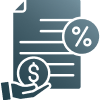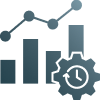The Chief Information Security Officer role has evolved into one of the most critical and complex executive positions in modern organizations. With ransomware attacks, AI security risks, and expanding operational technology responsibilities reshaping the cybersecurity landscape, hiring the right security leader has never been more consequential for business success.
Yet many organizations struggle to evaluate CISO candidates effectively, often focusing on technical credentials while overlooking the strategic leadership capabilities that drive transformational security outcomes.
The CISO is no longer just a technical guardian; the role now demands expertise in business, risk, technology, and even human behavior2. Modern CISOs must articulate the business implications of security investments and communicate the “so what” to senior management. Their success hinges on building trust across the enterprise and translating technical security requirements into business value that executives and board members can understand. However, many CISOs struggle with this business communication challenge, often lacking the ability to concisely explain the bang for their buck that organizations get from security investments.
Traditional interview approaches fail to capture the multifaceted nature of modern CISO responsibilities. The role now demands leaders who can balance immediate security threats with long-term business strategy, manage AI security risks, and communicate complex technical concepts to board members and executives.
The challenge for hiring managers lies in distinguishing between candidates who can articulate security frameworks and those who can drive organizational transformation while building resilient security cultures. Similar to our approach for evaluating CEO candidates, this framework focuses on assessment criteria rather than sample responses.
6 Questions to Ask a CISO During an Interview

This section provides a comprehensive framework for evaluating CISO candidates through strategic questioning that reveals their security leadership capabilities, risk management approach, and strategic thinking. It aims to help organizations identify candidates who can build security programs that scale with organizational growth while maintaining stakeholder confidence and regulatory compliance
Each question includes specific evaluation criteria and assessment frameworks that help hiring managers distinguish between candidates who can articulate security concepts and those who can drive transformational security outcomes. Rather than focusing on rehearsed responses, these questions are designed to uncover how candidates think, approach complex security challenges, and demonstrate the competencies essential for modern CISO effectiveness.
Our approach moves beyond traditional interview methods to provide hiring managers with tools to assess decision-making processes, change management capabilities, and the ability to translate security requirements into business value. This evaluation approach builds on research showing that decision-making discussions significantly impact executive success. The questions are structured to reveal both technical depth and strategic leadership capabilities, ensuring candidates can balance immediate security needs with long-term organizational resilience.
Question 1: Describe a situation where you had to balance critical security measures with urgent business objectives that seemed to conflict with your security requirements. How did you avoid being perceived as the “Department of No” while maintaining necessary protections?
Qué evalúa esta pregunta: This question reveals the candidate’s ability to find creative solutions that satisfy both security and business needs without compromising either. It uncovers their approach to stakeholder collaboration and their skill in reframing security as a business enabler rather than a barrier.
Key Evaluation Criteria: Look for responses that demonstrate collaborative problem-solving, creative alternative solutions, and the ability to maintain security standards while enabling business operations. Strong candidates will show how they work with business units to find mutually beneficial approaches rather than simply saying “no.”
Assessment Framework:
 Business Partnership Approach
Business Partnership Approach
 Creative Problem-Solving
Creative Problem-Solving
 Stakeholder Relationship Management
Stakeholder Relationship Management
 Security-as-Enabler Mindset
Security-as-Enabler Mindset
What to Watch For: Responses that show rigid adherence to policies without consideration of business impact, inability to find compromise solutions, or evidence of adversarial relationships with business stakeholders.
Question 2: Tell me about a significant security transformation you led that required changing organizational behavior and security culture. What resistance did you encounter, and what decisions helped you drive sustainable adoption
Qué evalúa esta pregunta: Security transformation success depends heavily on organizational change management capabilities and cultural leadership. This question evaluates the candidate’s ability to drive cultural change, manage resistance, and create sustainable security behaviors across the organization.
Modern CISOs must evolve from being perceived as the “party of no” or “security police” to becoming cultural champions who drive security awareness and engagement. Effective security leaders focus on building a security culture through clever training programs and organization-wide involvement, rather than relying on shame-based tactics like tricking employees with phishing emails and then criticizing them for clicking links.
Key Evaluation Criteria: Strong responses will demonstrate structured change management approaches, stakeholder mapping, and systematic methods for measuring cultural transformation. Look for evidence of sustained behavior change rather than just policy implementation.
Assessment Framework:
![Workflow Changes]() Change Management Methodology
Change Management Methodology
 Resistance Management
Resistance Management
 Measurement Approach
Measurement Approach
 Sustainability Mechanisms
Sustainability Mechanisms
What to Watch For: Responses that focus primarily on technology deployment without addressing human factors, inability to articulate specific change management strategies, or evidence of top-down mandates without cultural buy-in.
Question 3: How do you approach building security capabilities that can scale with rapid business growth while maintaining regulatory compliance across multiple jurisdictions?
Qué evalúa esta pregunta: This question evaluates strategic thinking, scalability planning, and regulatory expertise. It reveals how candidates balance security effectiveness with business agility while managing complex compliance requirements.
Key Evaluation Criteria: Look for systematic approaches to capability building, understanding of regulatory complexity, and frameworks for maintaining security effectiveness during rapid growth. Strong candidates will demonstrate experience with scalable security architectures and compliance automation.
Assessment Framework:
 Scalability Planning
Scalability Planning
 Regulatory Knowledge
Regulatory Knowledge
 Architecture Thinking
Architecture Thinking
 Automation Approach
Automation Approach
What to Watch For: Responses that suggest manual, reactive approaches to compliance, limited understanding of regulatory complexity, or inability to articulate how security supports business scaling.
Question 4: Describe a situation where you had to manage a significant security incident while simultaneously communicating with board members, customers, and regulatory bodies. What was your approach to crisis communication and stakeholder management?
Qué evalúa esta pregunta: Crisis leadership reveals both tactical incident response capabilities and strategic communication skills. This question evaluates how candidates manage complex stakeholder relationships during high-pressure situations while maintaining organizational credibility.
Key Evaluation Criteria: Strong responses will demonstrate structured incident response processes, stakeholder-specific communication strategies, and the ability to maintain trust during crisis situations. Look for evidence of preparation, clear communication protocols, and post-incident improvement processes.
Assessment Framework:
![Workflow Changes]() Incident Response Leadership
Incident Response Leadership
![Workflow Changes]() Communication Strategy
Communication Strategy
 Stakeholder Management
Stakeholder Management
 Learning Integration
Learning Integration
What to Watch For: Responses that show reactive rather than prepared crisis management, limited stakeholder communication strategies, or difficulty maintaining composure and credibility during high-stakes situations.
Question 5: Tell me about a time when you had to secure executive buy-in and budget for a critical security initiative. How did you translate complex cybersecurity risks into business language that resonated with the C-suite and board?
Qué evalúa esta pregunta: This question evaluates the candidate’s ability to communicate effectively with senior leadership and transform technical security concepts into compelling business cases. It reveals their skill in positioning security as a strategic business investment rather than a cost center.
Key Evaluation Criteria: Strong responses will demonstrate clear communication strategies, business impact quantification, and the ability to connect security investments to broader organizational objectives. Look for evidence of successful stakeholder influence and budget approval.
Assessment Framework:
 Communication Translation Skills
Communication Translation Skills
 Business Case Development
Business Case Development
 Stakeholder Influence
Stakeholder Influence
 Strategic Positioning
Strategic Positioning
What to Watch For: Responses that rely heavily on technical jargon without business context, inability to quantify business impact, or evidence of unsuccessful attempts to secure leadership support for security initiatives.
Question 6: Tell me about a time when you had to build security partnerships with external organizations or vendors while maintaining appropriate risk controls. How did you structure these relationships to ensure both collaboration and security?
Qué evalúa esta pregunta: Modern security operations require extensive third-party relationships. This question evaluates the candidate’s ability to manage vendor relationships, assess third-party risks, and create collaborative security partnerships while maintaining appropriate controls.
Key Evaluation Criteria: Strong responses will demonstrate systematic vendor risk assessment processes, clear relationship governance structures, and the ability to balance collaboration with security requirements. Look for evidence of relationship management that enhances rather than compromises security.
Assessment Framework:
 Vendor Risk Management
Vendor Risk Management
![Workflow Changes]() Relationship Governance
Relationship Governance
 Collaboration Balance
Collaboration Balance
 Contract Management
Contract Management
What to Watch For: Responses that show limited vendor risk assessment capabilities, difficulty balancing security with partnership needs, or evidence of relationship management approaches that may create security gaps.
How to Evaluate AI Leadership And Strategic Implementation
Evaluating CISO candidates’ AI leadership capabilities requires moving beyond traditional interview methods to assess their strategic thinking about AI security challenges. Organizations implementing AI across multiple departments need leaders who understand both the transformative potential and security risks of artificial intelligence.
Effective evaluation combines case study analysis, technical discussions, stakeholder simulations, and portfolio reviews to reveal how candidates approach AI governance, risk assessment, and secure implementation at scale.

Assessment Framework Beyond Traditional Q&A:
- Real AI Security Case Studies: Present scenarios involving AI model vulnerabilities, data poisoning attacks, or algorithmic bias incidents to evaluate problem-solving approaches
- Technical Deep-Dive Discussions: Explore AI threat modeling methodologies, secure AI development lifecycles, and integration with existing security architectures
- Stakeholder Simulation Exercises: Test ability to communicate AI risks to board members, explain regulatory implications to legal teams, and collaborate with data science teams on secure implementation
- Portfolio Review Process: Examine previous AI security initiatives, measurable outcomes, and lessons learned from both successful implementations and challenges encountered
Core Competencies to Evaluate:
- AI Security Strategy Development: Ability to create comprehensive frameworks that address AI-specific vulnerabilities while enabling innovation and business value
- AI Ethics and Responsible Implementation: Understanding of algorithmic fairness, bias prevention, explainability requirements, and ethical AI governance principles
- AI Governance Frameworks: Knowledge of emerging regulatory requirements, industry standards, and best practices for AI oversight and accountability
- Business Impact Assessment: Capability to identify and quantify AI security risks that could disrupt operations, damage reputation, or create compliance violations
Understanding The Differences Between The CIO vs CISO Roles
Organizations often struggle to distinguish between the Chief Information Officer and the Chief Information Security Officer roles, creating confusion about executive responsibilities.
While both involve technology leadership, their focus differs fundamentally: CIOs drive innovation and business enablement, while CISOs concentrate on risk mitigation and security assurance. Modern business requires extensive collaboration between these roles to balance growth with protection.

CIO Primary Responsibilities: CIOs lead technology strategy, digital transformation, and IT operations. They oversee enterprise architecture, manage technology budgets, evaluate emerging technologies, and drive adoption that improves customer experience and operational performance. Their focus centers on enabling business growth through technology solutions while maintaining operational excellence.
CISO Primary Responsibilities: CISOs develop cybersecurity strategy, manage risk programs, and ensure regulatory compliance. They build security architectures, lead incident response, oversee vendor security assessments, and communicate risk to leadership. Their focus centers on protecting organizational assets while enabling secure business operations.
Areas of Collaboration: Both roles collaborate extensively on technology implementations, cloud transformations, data management, and vendor relationships. They must balance innovation speed with security requirements, ensure partners meet functional and security standards, and jointly lead digital transformation projects that achieve business objectives while maintaining risk controls.
Organizational Structure Decisions: Smaller organizations may combine responsibilities under one executive, typically a CIO with security oversight. However, highly regulated industries, companies handling sensitive data, or those undergoing rapid transformation typically require both dedicated positions. The decision depends on size, industry risk, regulatory requirements, and technology complexity.
Reporting Structure Variations: CIOs typically report to CEOs or COOs, reflecting their operational role. CISOs may report to CEOs, CIOs, or Chief Risk Officers depending on organizational philosophy. Financial services and healthcare often have CISOs reporting directly to CEOs due to regulatory requirements, while technology companies may have CISOs report to CIOs for integration. The optimal structure balances security independence with technology integration needs.
Understanding The CISO Role In 2025
The Chief Information Security Officer role has transformed from a technical security function into a strategic business leadership position. According to Splunk’s CISO Report, 86% of those surveyed say that the role has changed so much since they became a CISO that it’s almost a different job. The role has moved from primarily being a technical role to more of a business leader2.
CISOs now prioritize strengthening organizational security posture, while cyber resilience has emerged as the leading functional priority.
This shift reflects cybersecurity’s evolution from defensive afterthought to growth enabler, with organizations increasingly involving CISOs in strategic technology decisions that shape business direction and competitive advantage.

CISO Organizational Structure Reality
Understanding CISO Reporting Structures
This organizational structure can create challenges, as CISOs may be two or three levels below the executive suite, limiting their direct interface with the CEO and board of directors. For example, a CISO might report to a CTO who reports to a CLO who reports to the CEO, creating multiple layers of communication and potentially reducing strategic influence.
When evaluating CISO candidates, consider how they’ve navigated these structural challenges and their ability to influence upward through multiple organizational layers while building relationships across functions.
The Chief Information Security Officer role has transformed from a technical security function into a strategic business leadership position. The CISO function is relatively new (15-20 years maximum), making it a newcomer compared to established C-suite roles like CFO, CRO, or COO.
Many of the initial CISOs came from IT and technology backgrounds, often lacking business acumen, communication skills, or the executive presence needed to sit at the executive leadership team level or communicate effectively with boards. This background partially explains why the role was initially relegated to C-1 or C-2 levels within organizations.
Essential CISO Qualifications for 2025:
- Perspicacia empresarial: Understanding business operations and translating security investments into clear business value and ROI
- Risk Management Expertise: Deep knowledge of risk assessment methodologies and risk-centric thinking
- Communication Skills: Ability to concisely communicate the business implications of security decisions to senior management and boards
- Pensamiento estratégico: Capability to build comprehensive security strategies that support business objectives and enable growth
- Leadership and Team Building: Experience building solid teams, mentoring subordinates, and identifying potential successors (deputy CISOs)
- Cross-functional Relationship Building: Ability to build relationships internally across departments and externally with partners and vendors
- Technical Proficiency: Strong technical background without necessarily needing to code, but with sufficient depth to guide technology decisions
- Cultural Leadership: Skills to drive security awareness and build organization-wide security culture through engagement rather than enforcement
Driving Strategic Results In Emerging Technology
The assessment strategies and evaluation frameworks outlined demonstrate the complexity of modern CISO hiring in an AI-driven business environment. Organizations need security leaders who combine traditional cybersecurity expertise with strategic thinking about emerging technologies, stakeholder management skills, and the ability to drive security transformation that enables rather than hinders innovation.
The six interview questions, role clarity between the CIO and CISO functions, and AI leadership evaluation criteria provide a comprehensive approach to identifying candidates who can navigate the evolving threat landscape while supporting business growth objectives.
For additional insights on the evolving cybersecurity leadership landscape, explore our analysis of navigating cybersecurity and the CISO role.
At Kingsley Gate, our proven búsqueda de directivos methodologies ensure candidates possess the strategic thinking, influence capabilities, and business acumen required for CISO success in 2025’s complex cybersecurity environment.
Póngase en contacto with our team to discuss your executive search needs and learn how our proven assessment approach can help you identify security leaders who drive both protection and business performance.



